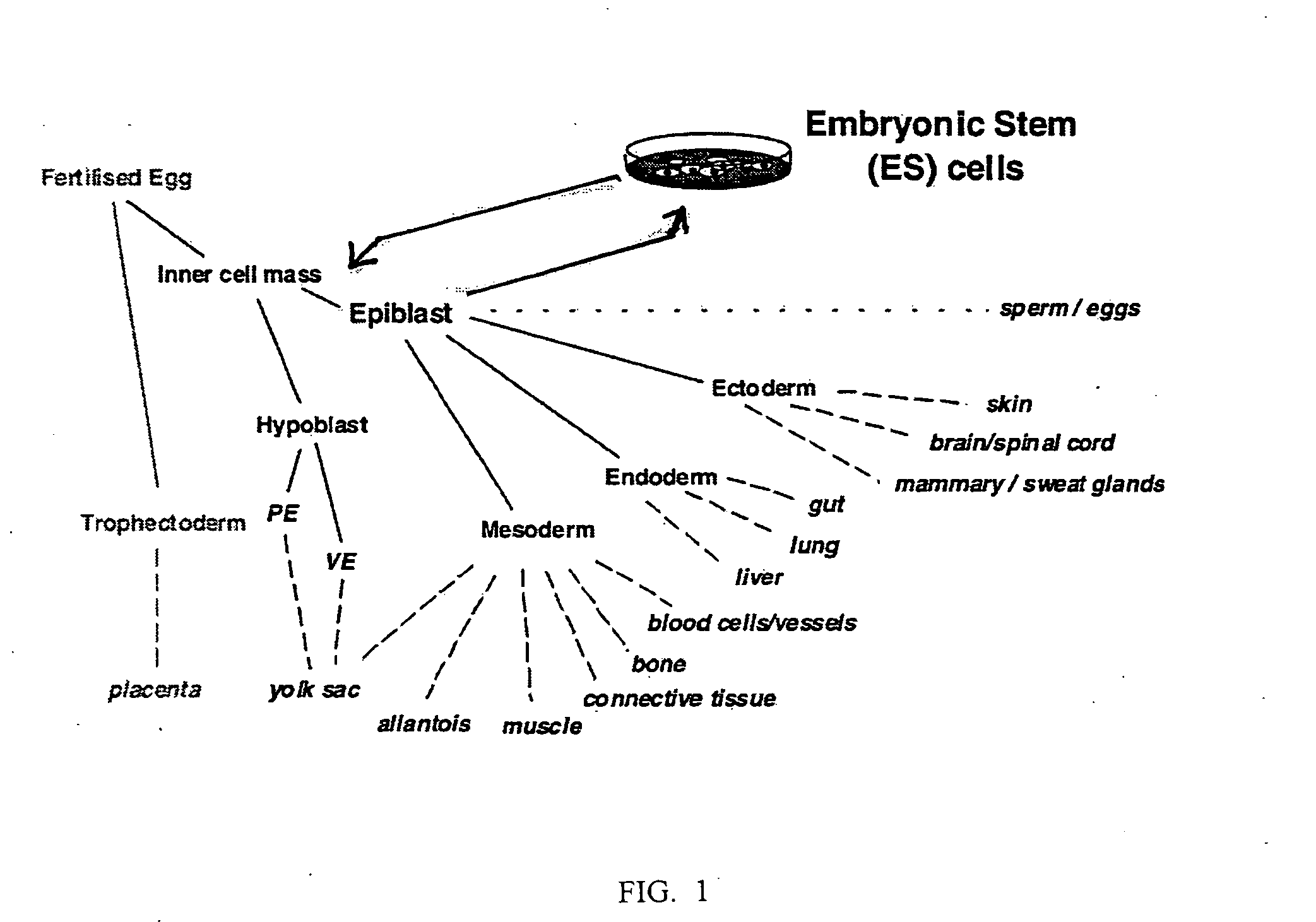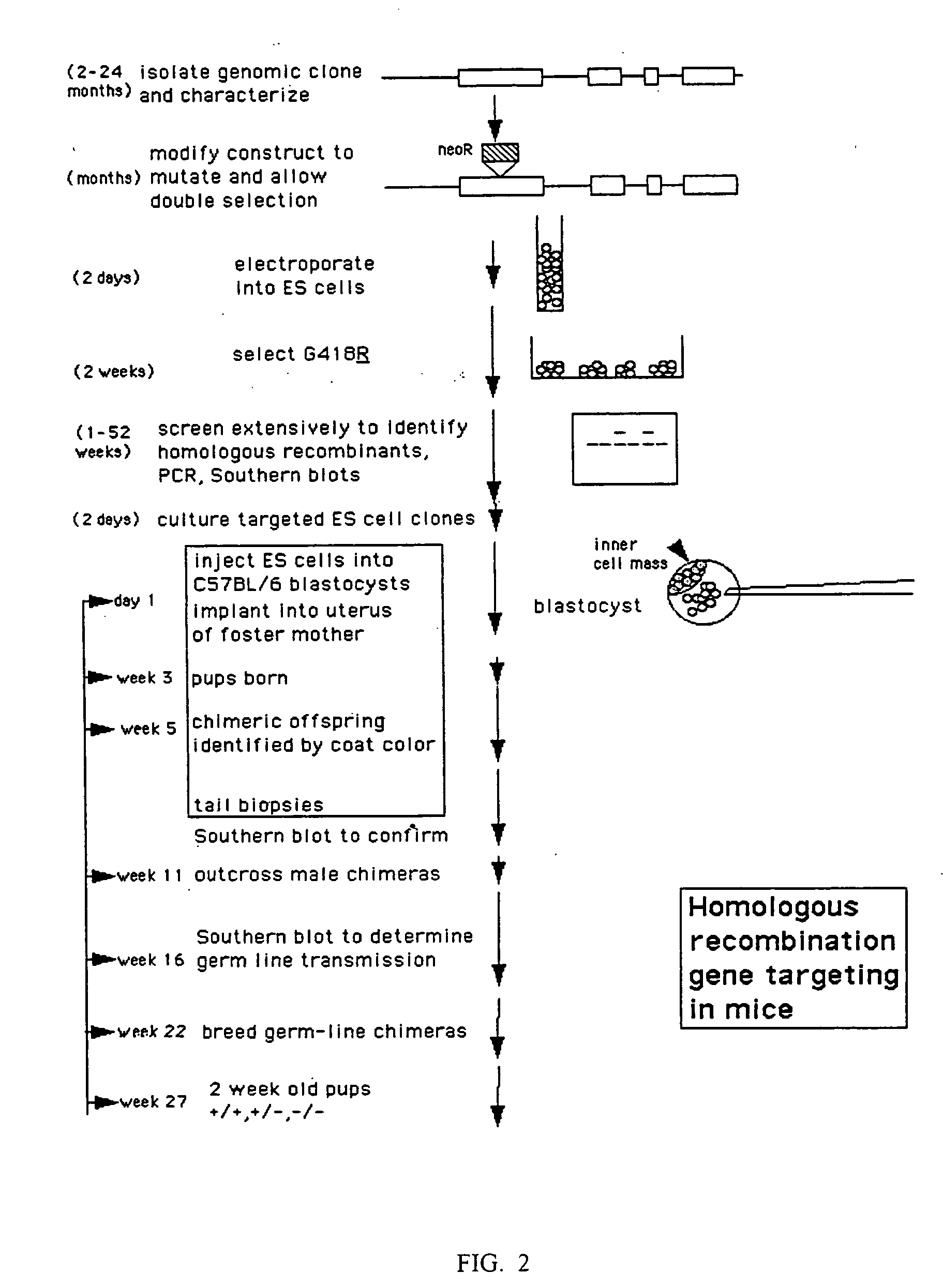Genetic modification of C57 mice
a technology of c57 mice and mice, which is applied in the field of generating can solve the problems of difficult to get germline transmission of c57 es cells, time-consuming and labor-intensive to generate genetically modified c57 mice, and difficult to get good quality and quantity of blastocysts from balb/c mi
- Summary
- Abstract
- Description
- Claims
- Application Information
AI Technical Summary
Benefits of technology
Problems solved by technology
Method used
Image
Examples
example 1
Generation of Genetically Modified Black C57 ES Cells and Albino C57 ES Cells
[0081] C57BL / 6 mice were obtained from Taconic. C57BL / 6J-Tyrc-2J (TyrC-2J) were obtained from Jackson Lab. Embryos were flushed from the uterus of C57BL / 6 and C57BL / 6J-Tyrc-2J with FHM medium (Specialty Media) on the fifth day after natural mating. Well developed blastocysts were transferred to ES medium of 96 well plate with gamma-irradiated mouse embryonic fibroblasts as feeder layers and late developed embryos were put into the KSOM medium (Specialty Media). ES cell medium contains 15% FBS (HyClone), 1 mM non-essential amino acids (GIBCO), 0.1 mM 2-mercaptoethanol (GIBCO), 1000 units / ml Leukemia—inhibitor factor (LIF) (Chemicon:ESG 1107). All embryos in KSOM were transferred to ES medium four days later.
[0082] Two black C57 ES cell lines (IC1 and IC2) were established.
[0083] To generate genetically modified C57 ES cell lines, black C57 ES cells were electroporated by two of different constructs conta...
example 2
Generation of “Black into Black Chimeras”
[0085] Blastocysts were harvested by flushing uterus of 3.5 dpc black C57BL / 6J mice. Genetically modified black C57 ES cells were injected into black blastocyst donors to produce a black germline transmission. There is no record in prior act of the above procedure. Since color changes are not helpful in detecting the chimeras, PCR and Southern Blot techniques were used to evaluate the chimeras. Results are given in FIG. 10 and FIG. 11, respectively. The advantages of the above technique are pure background, high efficiency (100%) germ line transmission and reduction in cost and time for producing the animals for use in experimentation. FIG. 8 summarizes the results of germline transmission of the black into black scheme.
example 3
Generation of “Black into White” Chimeras
[0086] Genetically modified C57 ES cells (black) were injected into albino C57BL / 6 (white) blastocyst donors to produce chimeric germline transmission. FIG. 12. The only record in prior act of injecting ES cells (black) into albino C57BL / 6 (white) is by Schuster-Gossler, K et al Biotechniques 31: 1026-1034 (2001). However, these authors used wild type ES cells (black) and not genetically modified ES cells (black). FIG. 12 and FIG. 13 describe the results for chimeras and germline transmission for above experiments.
PUM
| Property | Measurement | Unit |
|---|---|---|
| Color | aaaaa | aaaaa |
Abstract
Description
Claims
Application Information
 Login to View More
Login to View More - R&D
- Intellectual Property
- Life Sciences
- Materials
- Tech Scout
- Unparalleled Data Quality
- Higher Quality Content
- 60% Fewer Hallucinations
Browse by: Latest US Patents, China's latest patents, Technical Efficacy Thesaurus, Application Domain, Technology Topic, Popular Technical Reports.
© 2025 PatSnap. All rights reserved.Legal|Privacy policy|Modern Slavery Act Transparency Statement|Sitemap|About US| Contact US: help@patsnap.com



